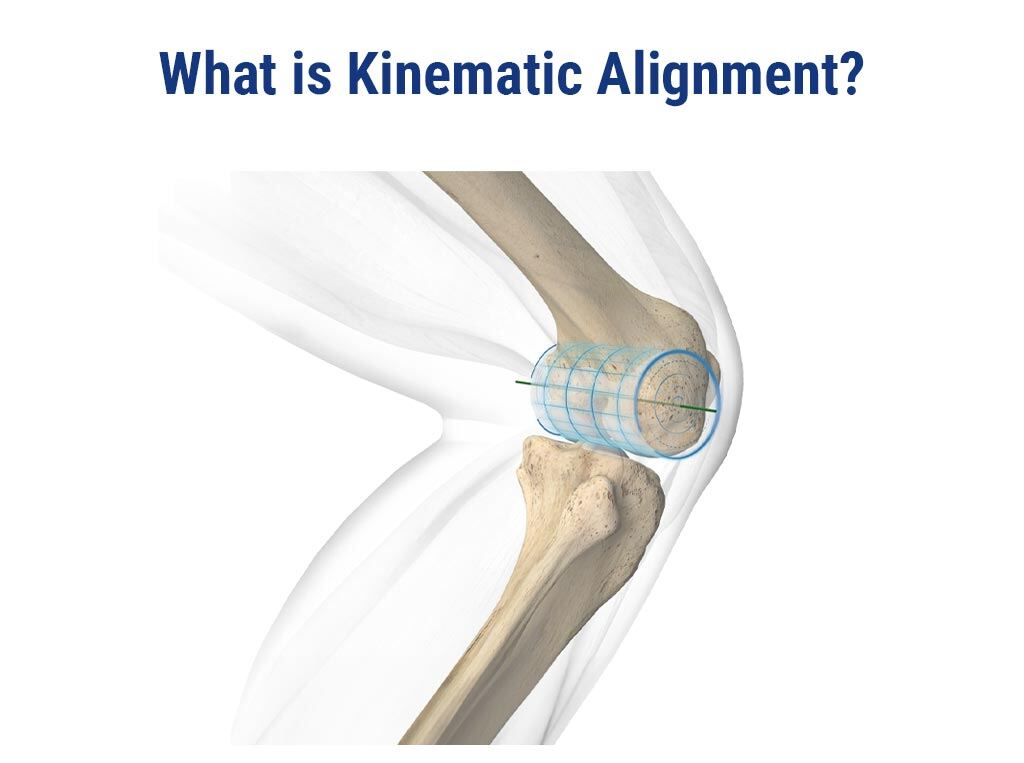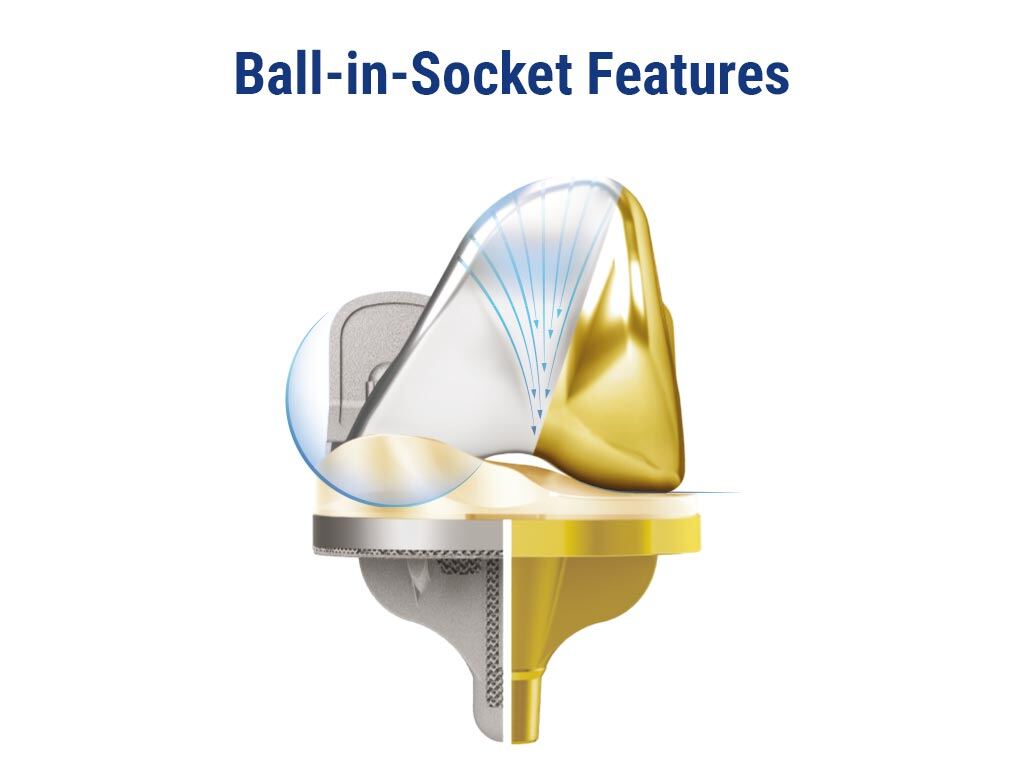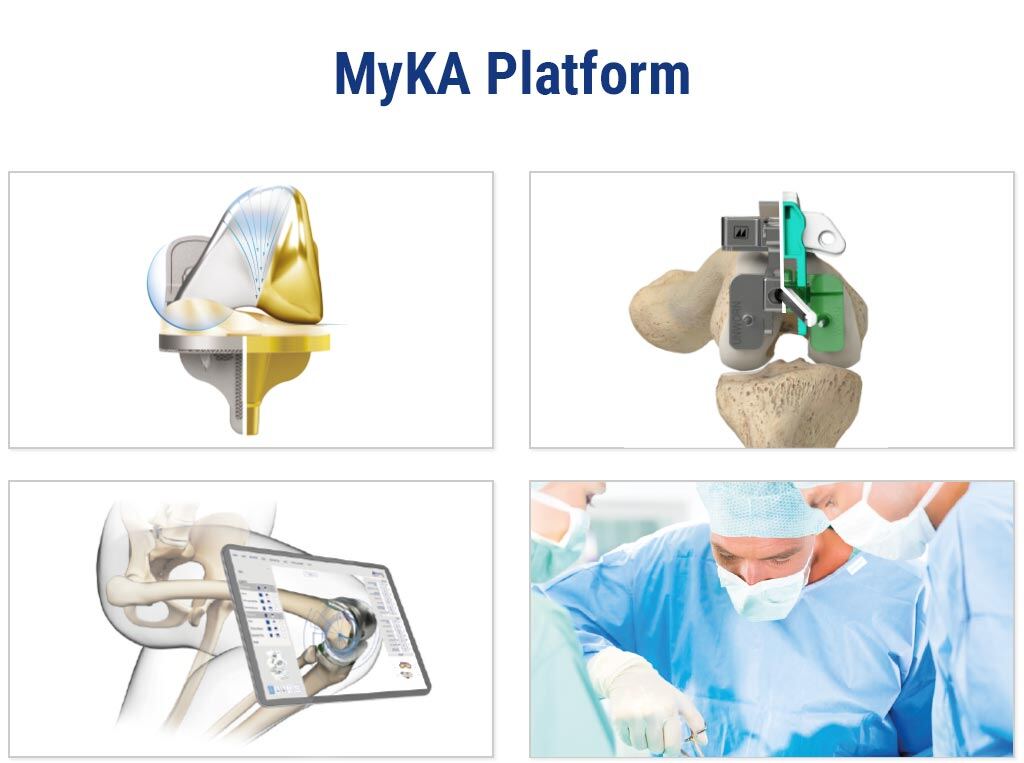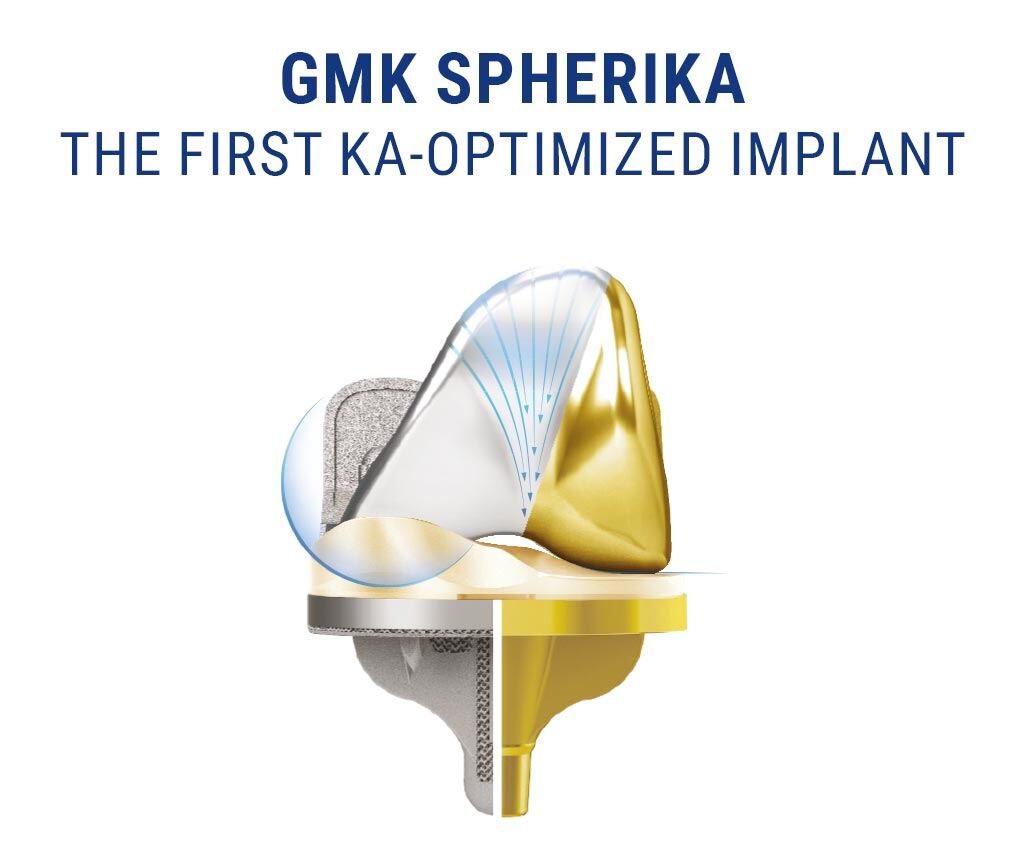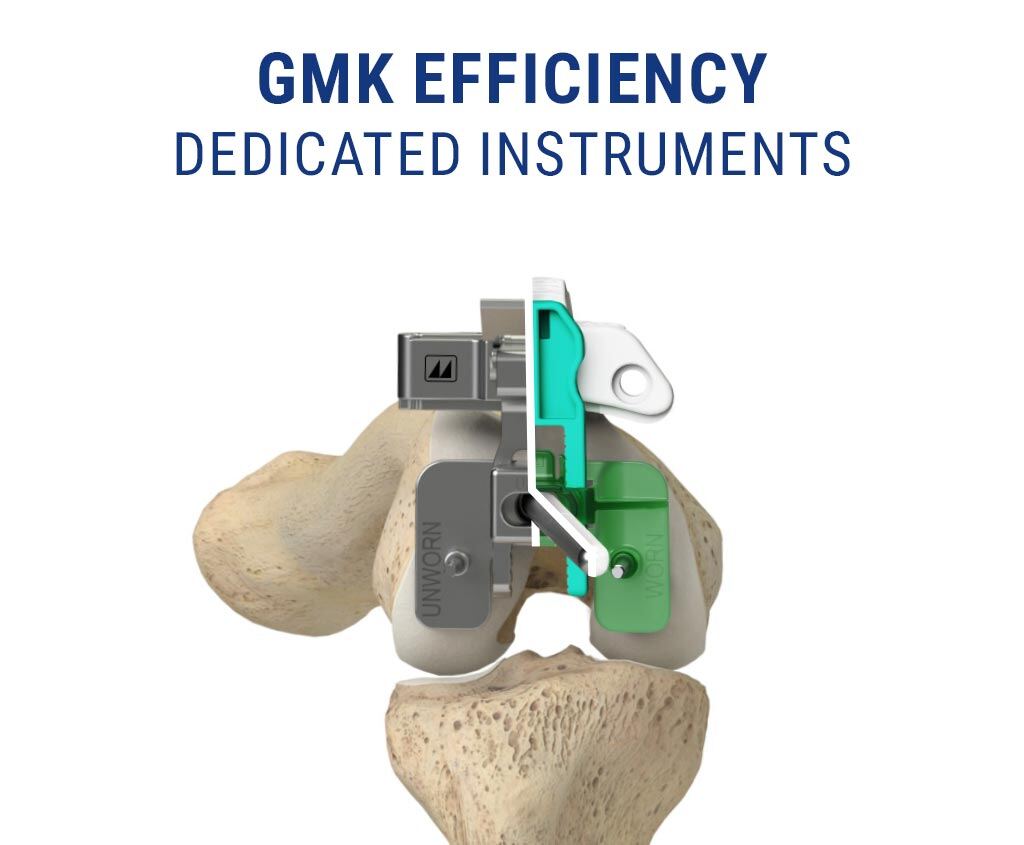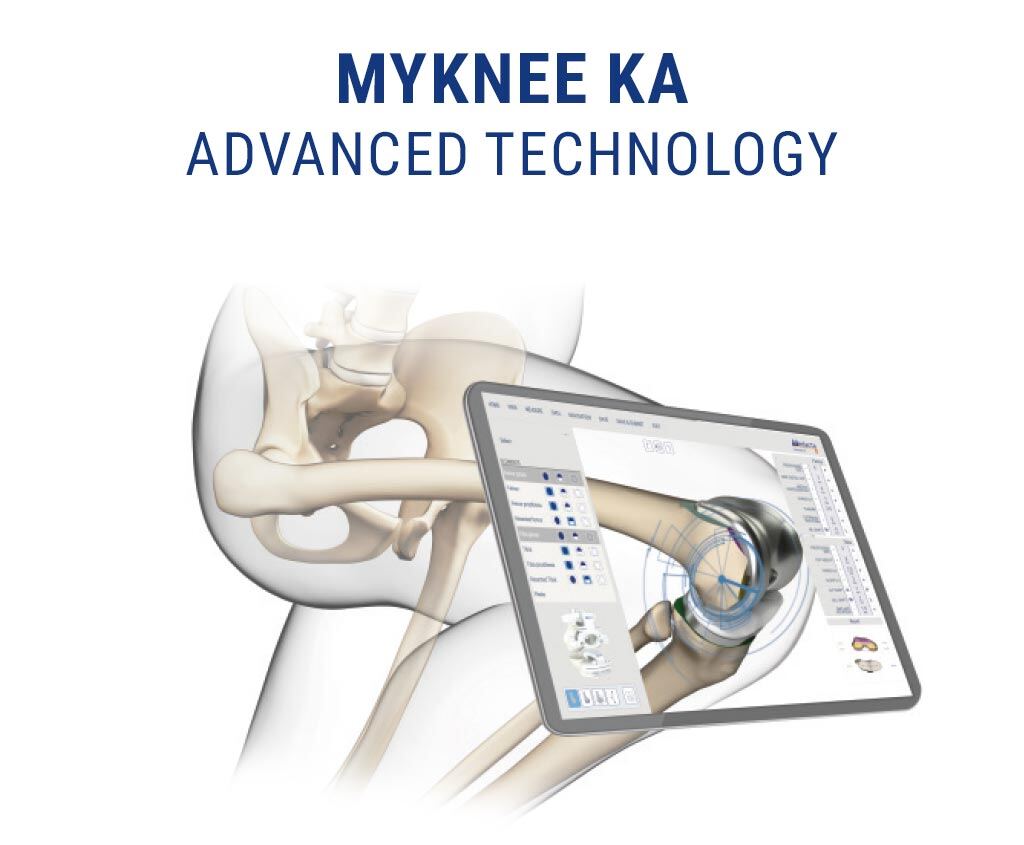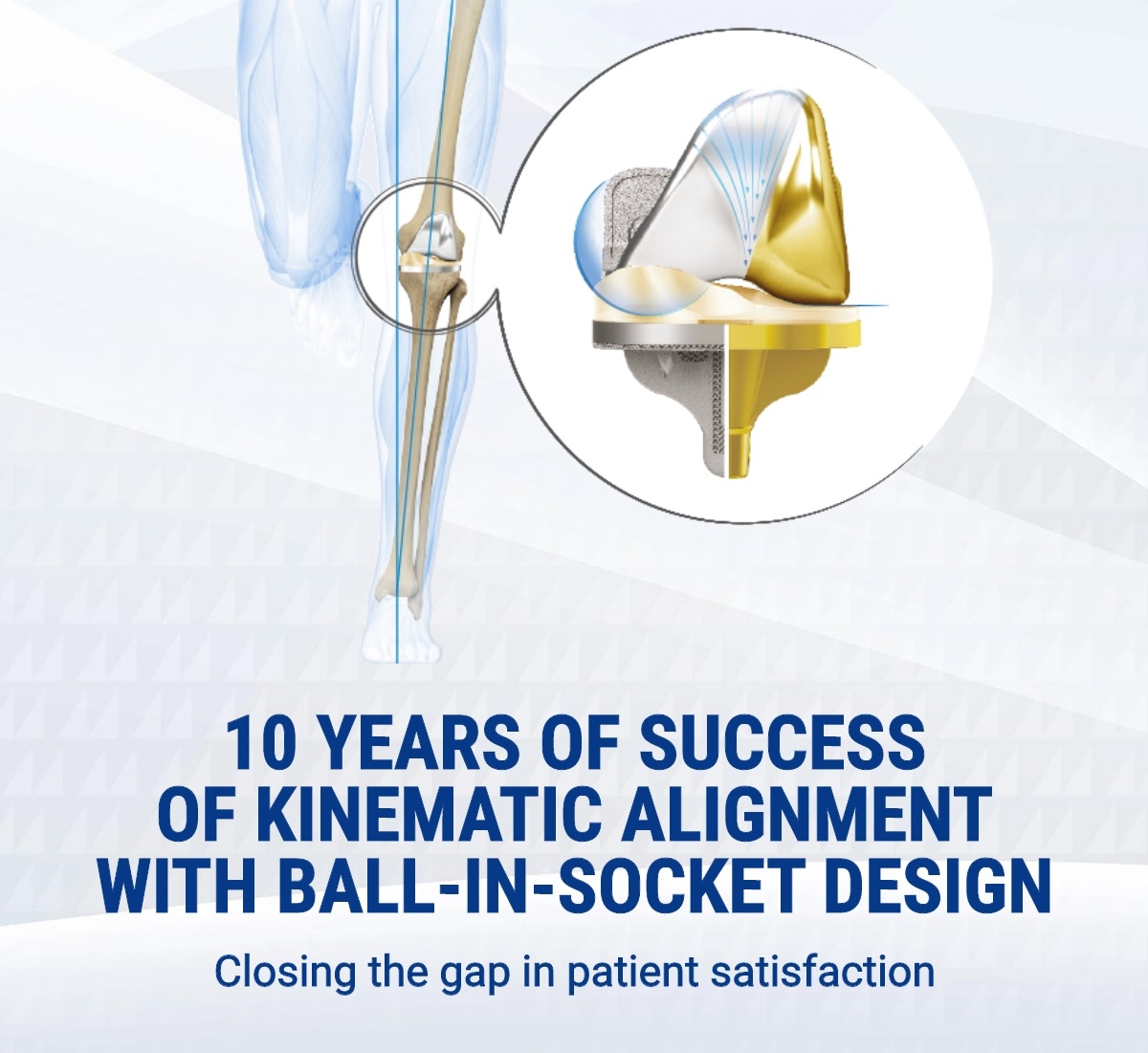
10 YEARS OF SUCCESS OF KINEMATIC ALIGNMENT WITH BALL-IN-SOCKET DESIGN
Closing the gap in patient satisfaction
Historically, the standard of care in Total Knee Replacement (TKR) has not fully met all patient needs, resulting in many being dissatisfied with their post-surgery outcomes compared to those undergoing Total Hip Replacement1,2,3.
Over the past ten years, the synergy between the Kinematic Alignment (KA) technique and our Ball-in-Socket (B-i-S) design has demonstrated progress in improving patient satisfaction in TKR4,5,6.
Leveraging this innovation, Medacta has been a pioneer in Kinematic Alignment (KA), leading the way in research, development, and education.
What is Kinematic Alignment?
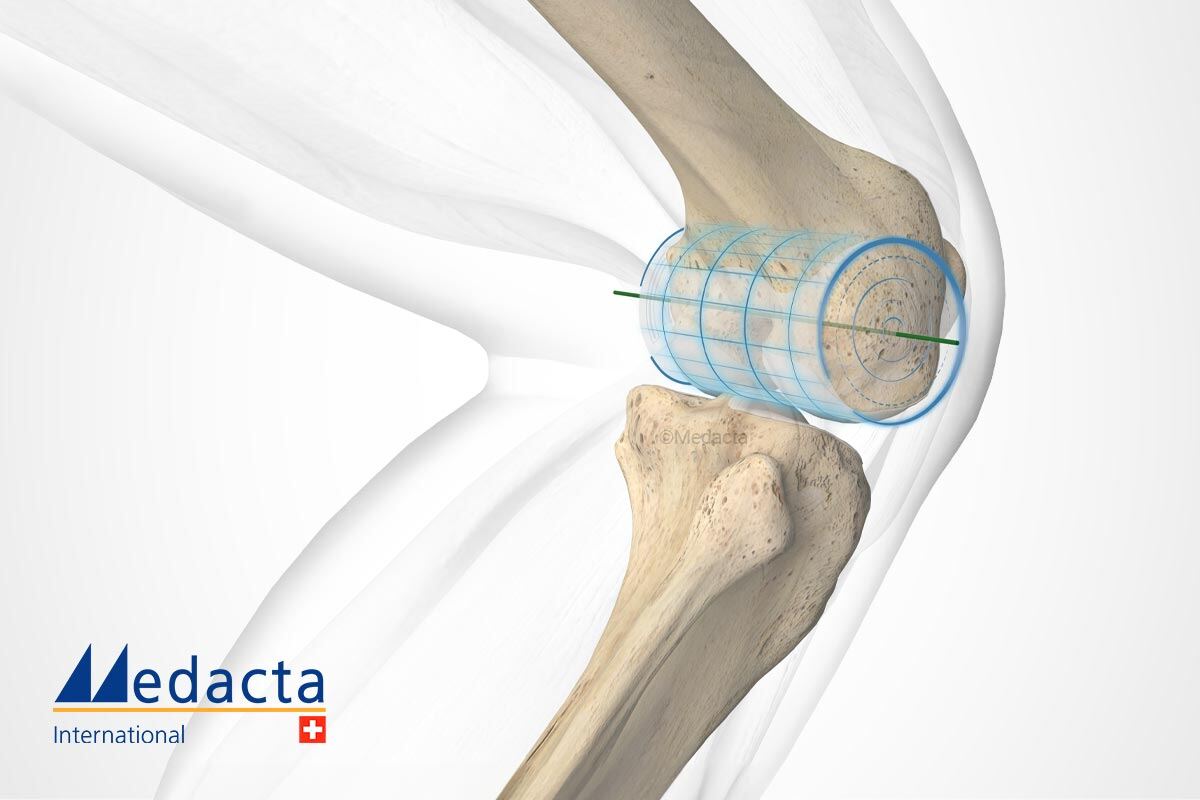
When I started working on Kinematic Alignment, I faced a lot of challenges and skepticism. In Medacta, I found a partner deeply committed to patient well-being, which was crucial in the development of dedicated tools and implants, facilitating a wide adoption of the technique.
Adventist Health, Lodi, CA
Kinematic Alignment has become one of the most-discussed concepts in TKA. Growing out of the desire to deliver a personalized approach to arthroplasty, KA has shown promising results in published literature with the potential to positively impact patient outcomes.
JIS Orthopedics, New Albany, OH
Ball-in-Socket Features
Introduced with GMK Sphere, the Medial Ball-in-Socket with flat lateral compartment design remains a groundbreaking innovation, setting itself apart in the market and serving as the solid foundation for GMK SpheriKA: the first and only KA-optimized implant.
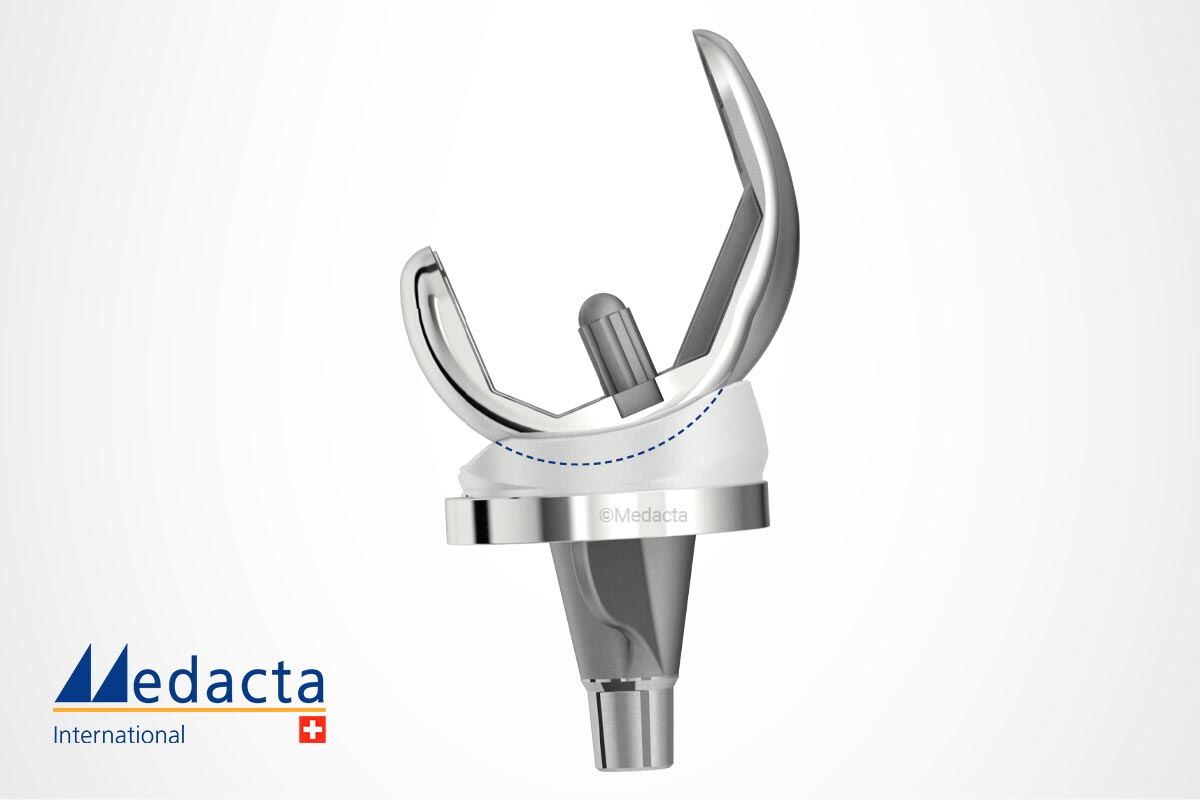
Medial Ball-in-Socket
A 1:1 congruent medial compartment provides high functional stability during the most demanding activities throughout the whole Range of Motion. This prevents any implant-related mid-flexion instability11,12,13 and allowing for an unconstrained lateral compartment11,14,15,16.
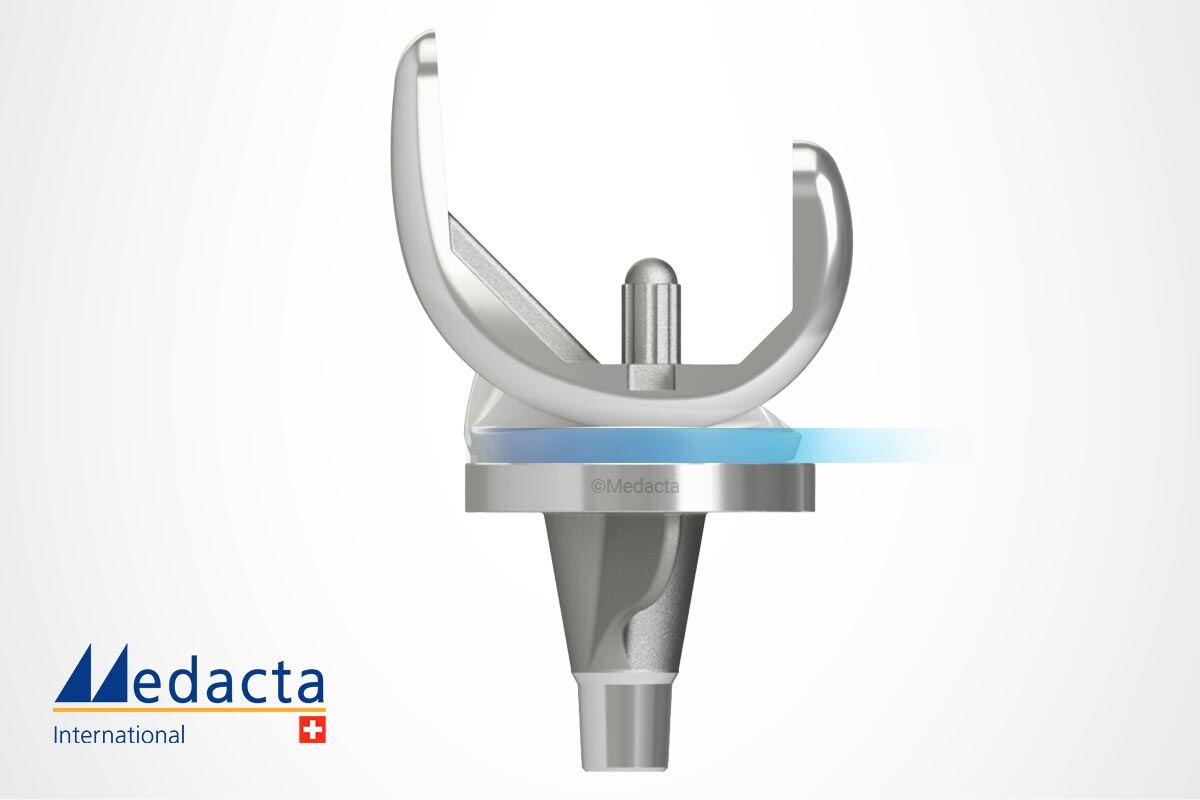
Unconstrained Lateral Compartment
When it comes to Ball-in-Socket designs, Medacta’s is the only one with a completely flat lateral compartment that ensures complete freedom of rollback and rotation to accommodate the best pattern of kinematic motion for each patient, rather than imposing an assumed “norm” 13.
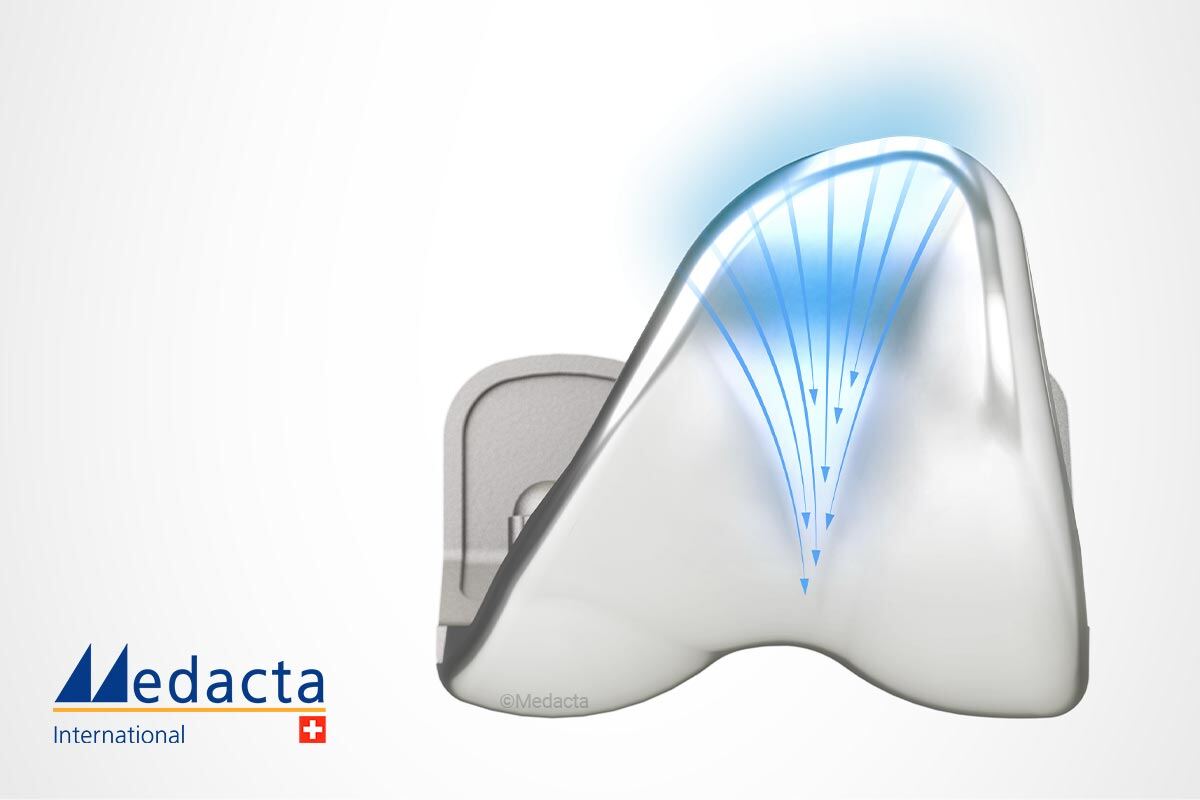
KA-Optimized Anterior Aspect
Built upon the GMK Sphere Medial Ball-in-Socket legacy, GMK SpheriKA is the first and only implant specifically optimized for Kinematic Alignment. It features a funnel-designed trochlea groove to accommodate a wider range of Q-angles for patient-specific PFJ tracking, and optimized bone coverage for the KA technique17.
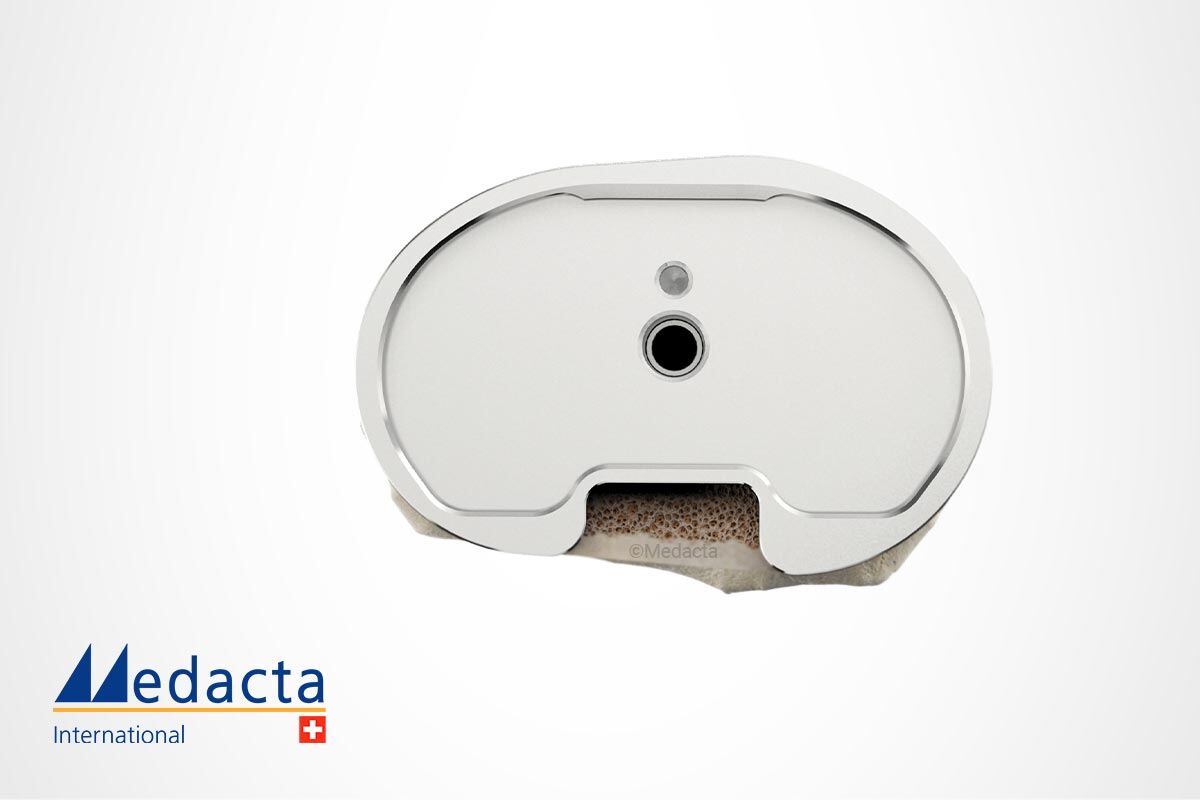
Asymmetric Tibial Baseplate
The anatomically shaped tibial baseplate is designed to fit the asymmetrical profile of the tibia, maximizing coverage of the proximal tibia while optimally transferring loads to the cortical rim. This reduces the risk of subsidence, and the potential for painful posterior soft tissue impingement18. This shape has been proven to be particularly suitable for Kinematic Alignment19, 20.
Medacta's Medial Ball-in-Socket with flat lateral compartment design and Kinematic Alignment are based on similar observations of anatomy and share the same goal of improving patient outcomes through restoration of the biomechanics of the natural knee.
When combined with the KA technique, this design has been shown to provide better functional scores and improve patient outcomes compared to other designs4,6.
GMK SpheriKA is supported by MyKA, a comprehensive platform for Kinematic Alignment, that features dedicated instruments and technologies and a tailored M.O.R.E. Education Program. Medacta has been a pioneer of this technique, in line with its pillar of responsible innovation to improve patient satisfaction.
OUR JOURNEY TO IMPROVE PATIENT OUTCOMES
Discover how the development of GMK Sphere in 2011 marked a pivotal moment in our unwavering commitment to improving patient satisfaction.


